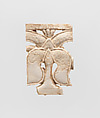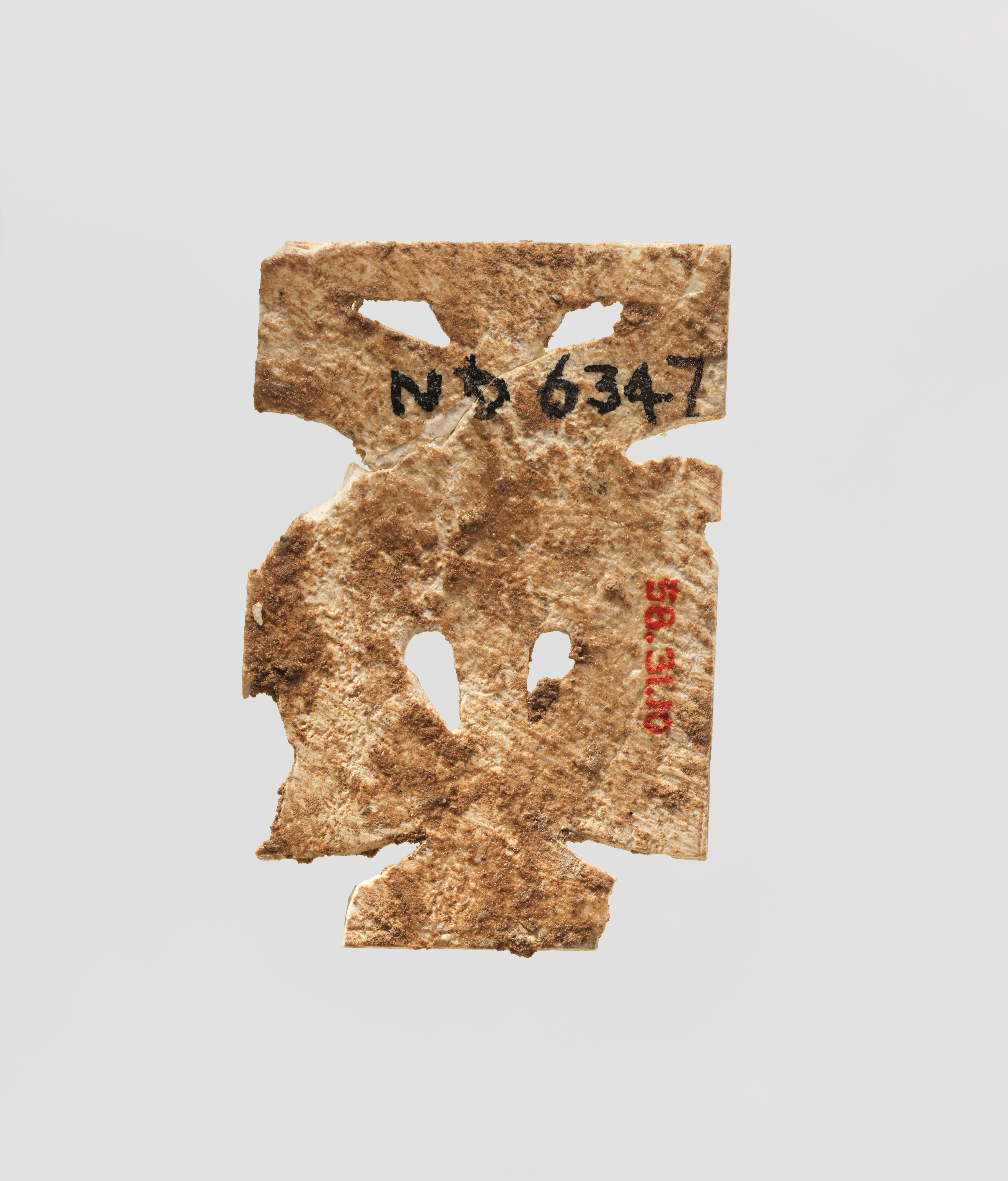Openwork furniture plaque with leaves
Not on view
Set within a thin frame preserved above the upper edge of this fragmentary openwork plaque, two sets of successively unfolding leaves outlined with raised ribs grow out of a thin stalk that contrasts with its wide base. Triangular junctures, also detailed with raised ribs, join each stylized leaf and sprout additional floral elements. The elegant forms and openwork technique are characteristic of the Phoenician style. The preserved fragment of another leaf on the right side of this piece suggests that plaques with this theme were probably placed side by side to form a continuous floral frieze. Another openwork plaque with similar imagery found at Arslan Tash in Syria is also in the Metropolitan Museum’s collection (MMA 57.80.14).
Built by the Assyrian king Ashurnasirpal II, the palaces and storerooms of Nimrud housed thousands of pieces of carved ivory. Most of the ivories served as furniture inlays or small precious objects such as boxes. While some of them were carved in the same style as the large Assyrian reliefs lining the walls of the Northwest Palace, the majority of the ivories display images and styles related to the arts of North Syria and the Phoenician city-states. Phoenician style ivories are distinguished by their use of imagery related to Egyptian art, such as sphinxes and figures wearing pharaonic crowns, and the use of elaborate carving techniques such as openwork and colored glass inlay. North Syrian style ivories tend to depict stockier figures in more dynamic compositions, carved as solid plaques with fewer added decorative elements. However, some pieces do not fit easily into any of these three styles. Most of the ivories were probably collected by the Assyrian kings as tribute from vassal states, and as booty from conquered enemies, while some may have been manufactured in workshops at Nimrud. The ivory tusks that provided the raw material for these objects were almost certainly from African elephants, imported from lands south of Egypt, although elephants did inhabit several river valleys in Syria until they were hunted to extinction by the end of the eighth century B.C.
Due to rights restrictions, this image cannot be enlarged, viewed at full screen, or downloaded.
This artwork is meant to be viewed from right to left. Scroll left to view more.



